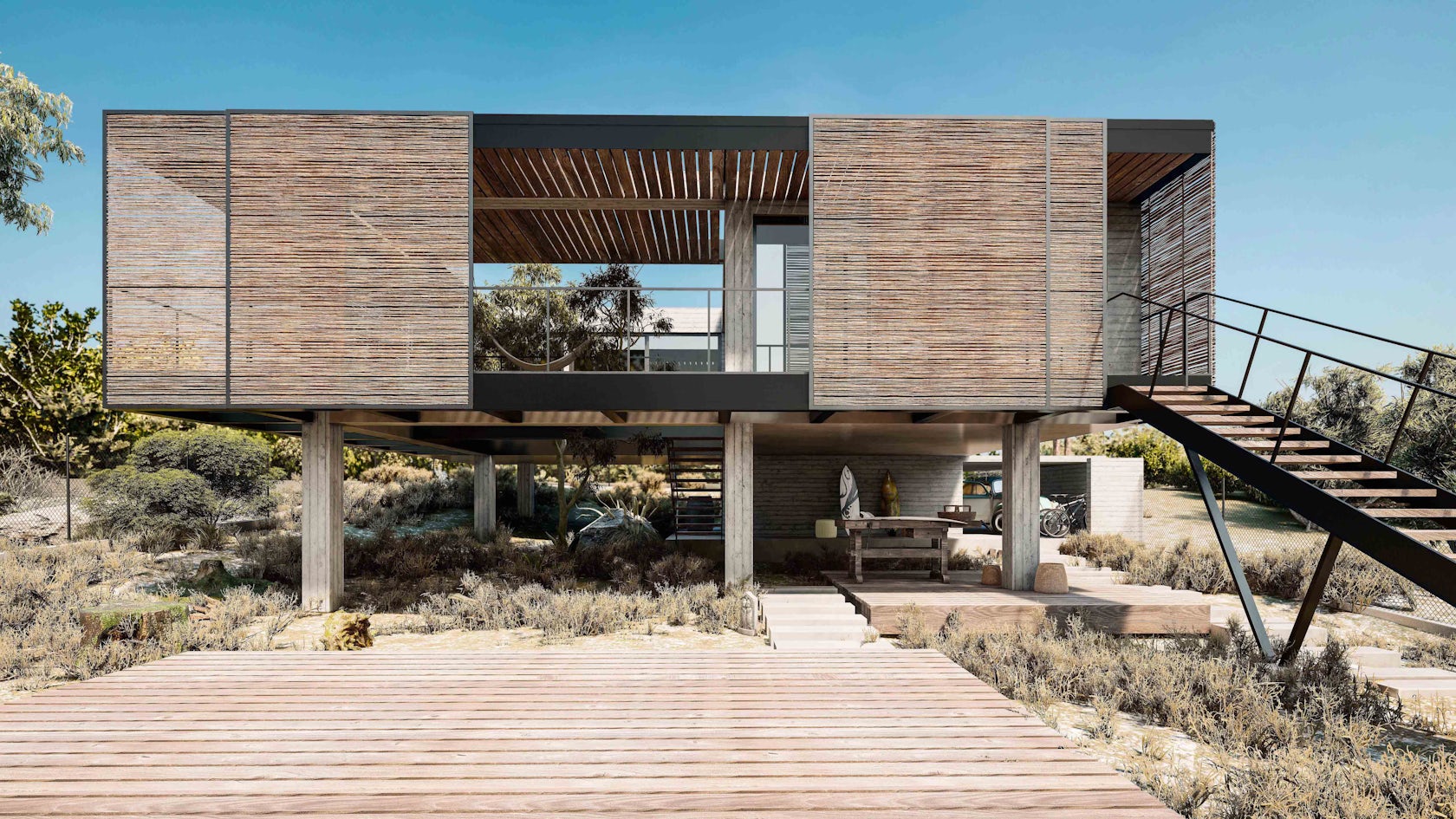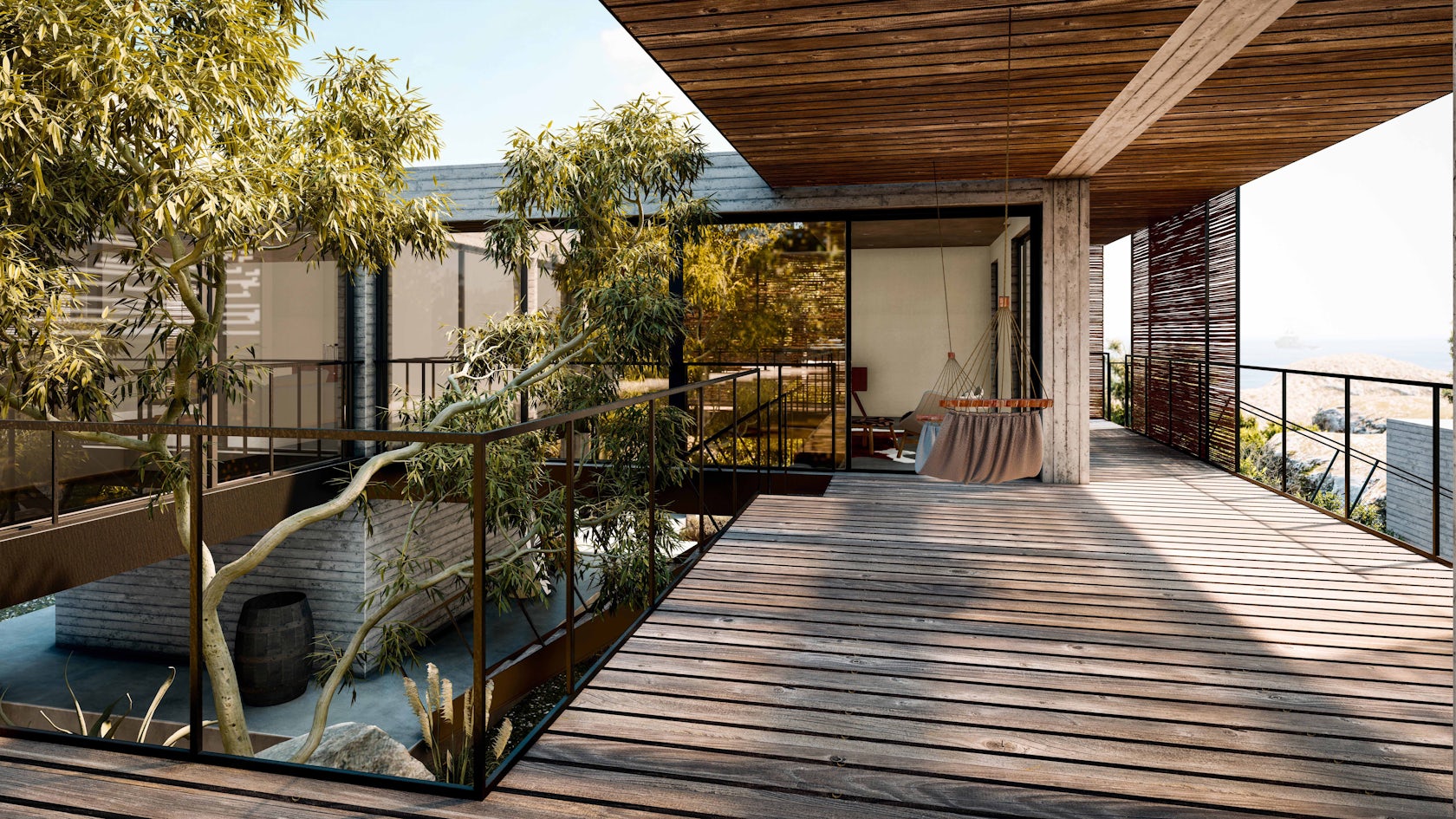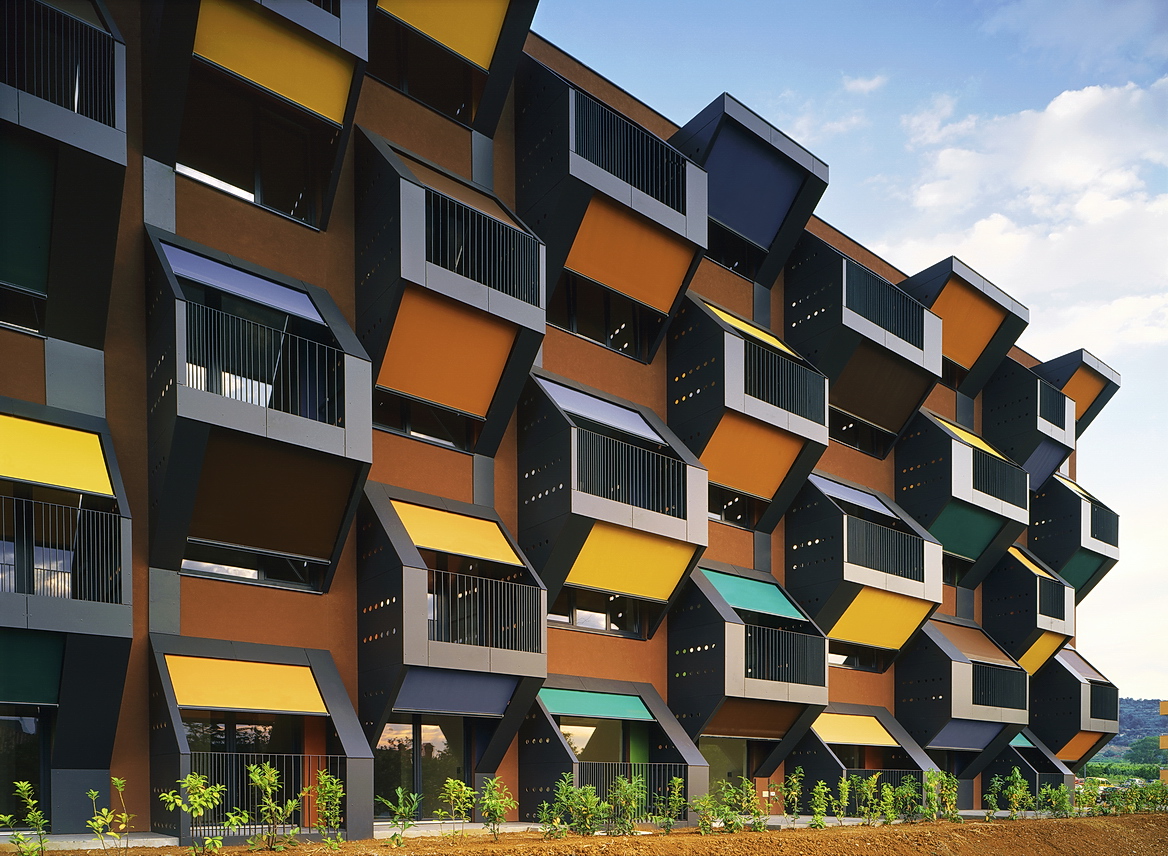The Surfer’s house suggests living in between the inside and outside space. Plants and rocky fields are captured by the structure and let rest into living spaces. The construction’s ground imprint is minimised in order to preserve the local microclimate and natural flora. Design is about what is the minimum necessity of living. Ecological awareness and narrativity together with the local tradition of house life is adopted into design. Situated in a small plot in Paphos Suburbs, the 100sqm house encloses outdoor spaces into a functional circuit of semi covered and covered areas, exposing “Akamas peninsula” plants and rocky grounds. Natural materials and claddings combined with movable screens made of reeds suggest a light and almost transparent cubical volume facing the sea view. On the natural ground of the “pilotis” underneath, the Surfer spends his time in an outdoor workshop.
Architizer chatted with Christiana Karagiorgi, Architect and Founder at Christiana Karagiorgi Architects, to learn more about this project.
Architizer: What inspired the initial concept for your design?
Christiana Karagiorgi: Simplicity and minimalism in terms of appreciating and regenerating local values of the “topos” together with an approach into the meaning of “life through nature” were the main ideas that inspired for this project. In a way the project’s goal was to reinterpret the traditional Mediterranean way of living.

© Christiana Karagiorgi Architects

© Christiana Karagiorgi Architects
This project won in the 10th Annual A+Awards! What do you believe are the standout components that made your project win?
In an era of crises and economical and ethical downfall, the project stands out as a necessity in terms of design and function. It enhances the vision of returning to the roots of being – the tradition and identity of living, the relation to surroundings and nature and the creation of a new materiality based on what is affordable and simple to be constructed. In these terms it transforms the residential concept into a retreat – it returns to the roots that form the essential essence of living in a home.

© Christiana Karagiorgi Architects

© Christiana Karagiorgi Architects
What was the greatest design challenge you faced during the project, and how did you navigate it?
The challenge was to maintain the budget of the project which became part of the idea. The L shaped closed spaces where completed by an L shape exterior veranda thus creating a simple rectangular volume. The elevation of this volume doubled up the total living spaces with the pilotis underneath. It also gave the project the perspective of sea view from the main house’ s spaces. The effort to keep to the budget had to do with preserving the plot’s ground – no paved spaces were designed – no unified concrete foundations -which of course was our initial concept. The economic restraints complemented the ecological but also the aesthetic visions of the project – which was wonderful. The client adopted these decisions very easily.

© Christiana Karagiorgi Architects

© Christiana Karagiorgi Architects
How did the context of your project — environmental, social or cultural — influence your design?
We – as architects – sometimes have to face several needs in terms of design and aesthetics from clients that are not educated – which can become fatal if consistence is lost through the procedure. Most of the time the architect’s initial idea ends up in a drawer because the client thinks otherwise…. This project had the luck to survive because it was very well adopted by the client. I hope for future projects to have the same luck – to be adjusted on the user but also to stand out as unique gestures in a fine architectural manner. Design has to maintain the E(environmental), S(social) and C(cultural) context that contemporary architecture suggests. I hope that the notion of living is already moving towards these values so that we can – as architects – produce work that can change the norm a little bit…

© Christiana Karagiorgi Architects
In what ways did you collaborate with others, and were there any team members or skills that were essential in bringing this Award winning project to life?
Of course design is not a one man’s/ woman’s show. Consultants on structural design, electrical and mechanical were involved from the beginning. Perhaps for the Award win, the most important collaborator was the 3d creator, as the project is now under construction. Together we managed to bring it to life virtually and be able to submit to the Jury. My only concern is to achieve a construction result that can be even better than representation.

© Christiana Karagiorgi Architects
Were any parts of the project dramatically altered from conception to construction, and if so, why?
No, not at all. Until now that we have completed the concrete structure, no alterations have occured.
How have your clients responded to the finished project?
They are very cooperative and comprehensive in every phase of the project, the concept, the design and now the construction. They are eager to see the project completed of course, and they love what is being created day by day.

© Christiana Karagiorgi Architects
What key lesson did you learn in the process of conceiving the project?
The key lesson is always to adopt the user’s needs and let yourself create in restraints. Less freedom gives you more qualities in design because you are forced to step out of the norms. The important think is to then promote the result as a necessity and make it acceptable by the client. Alterations might happen but they must always advance the result, not degrade it.
How do you believe this project represents you or your firm as a whole?
I think it is representive enough. It has made the firm well known locally. Local society – the people responded very intensively which is great – I never expected it to be understood and appreciated in such extend. I do not believe I would design something similar again – would not want it really because each project must be unique and must stand out from its own character. I juts wish I will have the opportunity to produce different approaches to design that will stand out like that.

© Christiana Karagiorgi Architects
How has being the recipient of an A+Award evoked positive responses from others?
It is extremely important for a small firm – studio – to receive such an Award. I am grateful that this project has been appreciated globally. The A+Award evoked a very warm response not only from the local industry and colleagues here in Cyprus but also from colleagues in other countries which is very encouraging and wonderful. It is always creative to exchange views and comments about architectural production. It makes you feel that you are part of the progress, in your own – local solicited way…
How do you imagine this project influencing your work in the future?
I think this project will always be a pilot in the way it was conceived and realised. Not in terms of form or aesthetics but in taking the right decisions in the right time and pass them through adoption in the right way.
Is there anything else important you’d like to share about this project?
I would like to thank you and the Jury for the great honour to be awarded.
Consultants
Nice Engineering (Structural Consultants), Konsulto Engineering (Mechanical Consultants), Aristos Sofokleous (Electrical Consultant), A Squared Studio (3d Rendering Collaborator)
Products / Materials
Reeds of “lygaria” a greek plant that produces solid reeds in dark colour
For. more on A Surfer’s House, please visit the in-depth project page on Architizer.



 A Surfer's House
A Surfer's House 


